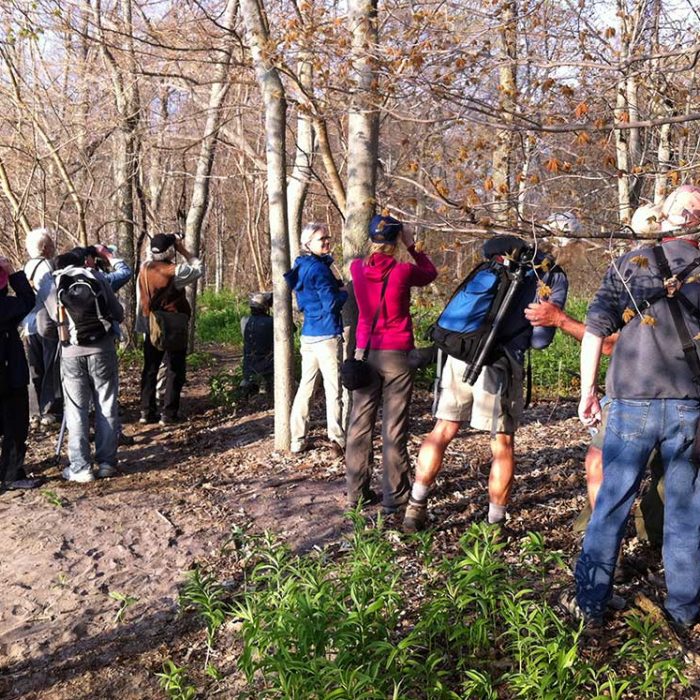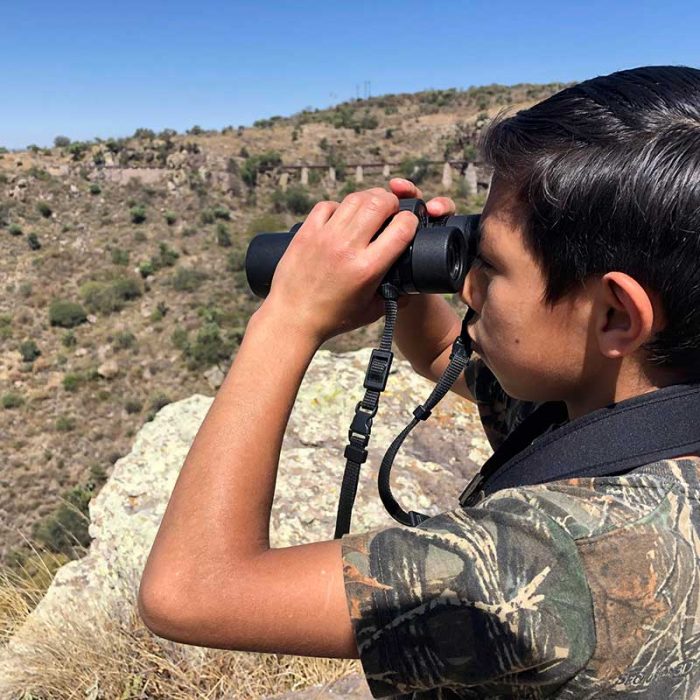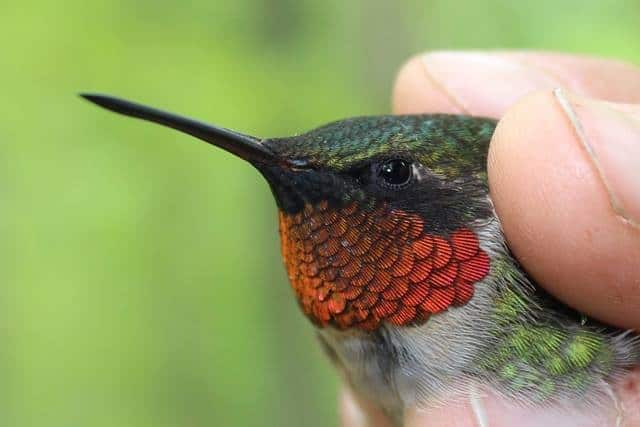The 2018 count season officially opened with the census starting April 1st. The early census counts had strong numbers of waterbirds such as Pied-billed Grebes and Bufflehead. Early spring sparrows were counted in high numbers right from the start; these include Dark-eyed Juncos and American Tree Sparrows. Flocks of blackbirds, mostly Red-winged Blackbirds and some Common Grackles are already roaming the island in April.
Sparrows, consisting of Juncos and Tree Sparrows mainly, and kinglets, almost entirely golden-crowned Kinglets were abundant in Early April as well. The weather turned for the worse around April 14th with strong winds and waves that lasted about 7 days. The powerful waves and high water transformed the sandy tip once again this year. Where there once was a long sand spit, there is now just a small beach. Mostly during the cold, stormy spell, we counted high numbers of kinglets, juncos and American Tree Sparrows. Horned Grebes were very numerous and were quite interesting to watch feeding in the crashing waves! Pine Warblers were among the first back seen on April 17th.
The weather has now given way to calmer and warmer weather. The first day of fair weather we counted far fewer kinglets, by the second and third days, we observed very few kinglets, juncos and tree sparrows.
The nets were put up on April 18th after waiting for some fair weather for some time. The first day of banding was on April 20th when the weather finally broke. Brown creepers, golden-crowned kinglets and hermit thrushes were all banded on the first day. The second day saw 22 golden-crowned kinglets and 9 Ruby-crowned kinglets banded. Kinglets continue to be the most frequently banded species.
Over the past 23 days, we averaged 37 species per census (90-minute walk). That is starting to shift from waterfowl to more land bird species. Since we started making observations in the netting area as well, we have averaged 49 species per day.
 Sumiko Onishi and Graeme Gibson in netting area on April 18th. Photo by Patrick Kramer
Sumiko Onishi and Graeme Gibson in netting area on April 18th. Photo by Patrick Kramer






